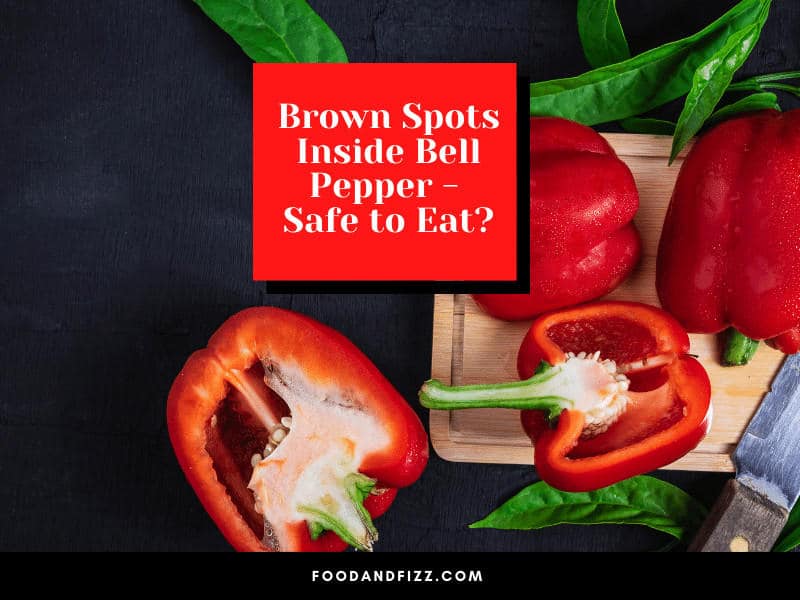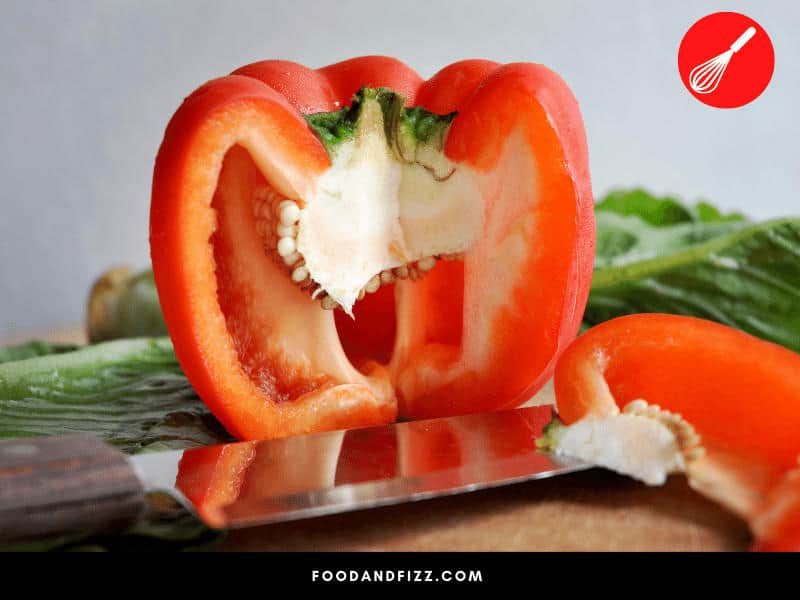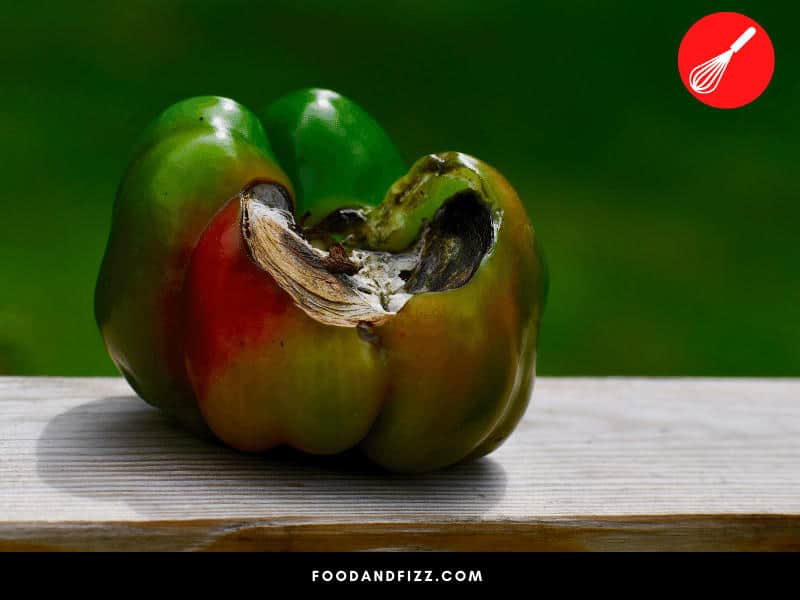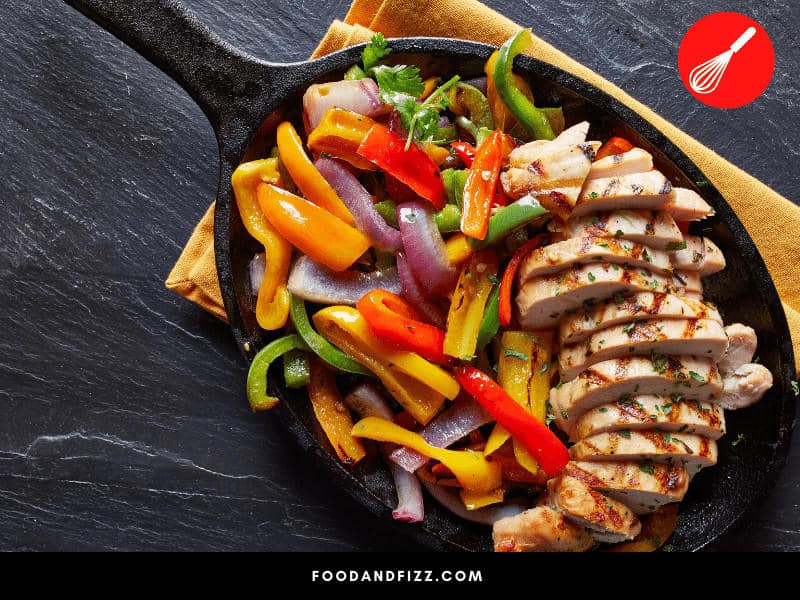Bell pepper is a blocky, bell-shaped vegetable fruit that varies in color. Some bell peppers are yellow, red, pink, white, orange, or green. Besides the color, bell pepper has a thick skin, a hollow interior, and numerous tiny seeds attached to the placenta.
Although most people may think all peppers are hot as chill or hot pepper, bell pepper is often considered a sweet pepper. The vegetable is popular among many people and can be eaten raw or cooked to a person’s pleasure.
Brown Spots Inside Bell Pepper-Safe to Eat?
The appearance of brown spots on the inside of a bell pepper’s wall indicates the vegetable is rotting. However, if the stem remains green, healthy, and solid, there is still no risk of consuming the bell pepper. Nevertheless, it’s significant to note that you might consider cooking the bell pepper rather than eating it raw if the brown spots are already showing. Remember when the brown spots start to show, storing the bell pepper longer would only mean it goes bad, thus making it unhealthy to consume. As such, it all depends on what you observe on the spread of the spots and whether the actual rotting is notable.

What Causes the Brown Spots Inside Bell Pepper?
There are several ways in which a bell pepper can develop brown spots. While some may not be so common, others are major causes. Here are some notable causes of brown spots on bell pepper.
1. Excessive water
Excessive water is a top cause of brown spots. Sometimes, the calcium in a bell pepper is imbalanced, leading to improper storage of excessive water. When the plant absorbs too much water, it’s stored in the fruit vegetable, forming brown spots. The spots are the beginning of the rotting process.

2. Fungal infections
Fungal infection is a serious concern when it comes to brown spots on the bell pepper, especially if eaten raw. That’s because it could transfer the infection to an individual.
One of the most notable fungal infections on bell pepper is anthracnose. If the brown fungal infections continue for some time, they could turn mushy, and the color may turn black. The best option is to dispose of the vegetable fruit when that happens.

3. Excess Fertilizer Input
Using too much fertilizer on bell pepper increases the amount of potassium and nitrogen, which in turn hinders calcium absorption.
Lack of sufficient calcium in the plant means bell pepper will not form healthy skin. The poor skin formation is recognizable as the brown spots appear inside and outside the vegetable fruit’s skin.
What Nutritional Value Can I Derive from Bell Pepper?
I always like checking on their nutritional value when it comes to meals. It’s this interest that drove me to a bit of research where I recognized the benefits of bell pepper. I realized the vegetable has numerous nutrients and its nutritional benefits are notable.
Although what I got from the materials seemed going excessively in praising the vegetable fruit, I can now confidently state it has health advantages. Not out of what I have read, but what I have experienced.
Bell pepper is the one vegetable I wouldn’t want anyone to miss in their meal. Here are some nutritional benefits one could enjoy just by consuming bell pepper.
- Lowers blood pressure: According to experts, vitamin C is significant in lowering blood pressure since it acts as a diuretic. As such, it removes excess fluid, thus lessening pressure on blood vessels. Bell peppers contain vast amounts of vitamin C.
- Lowers heart attack risks: Bell pepper contains an anticoagulant, which is essential in preventing blood clots along the blood vessels. That essentially aids in eliminating heart attacks.
- Digestive health: Raw bell pepper is highly rich in dietary fiber-containing about 2.5 grams. That makes the vegetable a necessary intake for the promotion of digestive health. Besides, the high fiber content reduces the possibility of hemorrhoids.
- Eye health: Bell pepper contains high amounts of carotenoids, which improve eye health significantly.
- Best during pregnancy: While not so many foods one would eat when pregnant, bell pepper is recommended for intake as it contains folate. Folate is a vitamin B-9 component that is significant in cell functioning and growth, hence necessary for pregnant mothers.
- Anemia prevention: Bell pepper is a reliable source of iron and improves iron absorption into the body due to its richness in vitamin C. Anemia results from iron deficiency, and eating bell pepper is a good solution for this!

Foods I Prepare Using Bell Pepper
If there is a vegetable I never fail to use in my recipes, call it the bell pepper! There are numerous tasty recipes you can prepare using bell pepper and enjoy. I do it every time, and it works wonders for me.
If you’ve ever tried using bell pepper in any of your delicacies, I bet you know what I’m talking about. Bell pepper gives a meal this unique taste you never want to miss! Here are some key meals where I never fail to use bell pepper as an ingredient.
1. Flavorful soups
Vegetables are crucial to flavoring soups, and bell pepper is no exception. Bell pepper makes a delicious soup and is a key ingredient for a vegetable medley.
2. Fajitas & Sizzling Stir-Fries
If there are meals I find easy to prepare and make them delicious, call them sizzling stir-fries or the fajitas. All I do to make them tastier is slice bell pepper and suit the meals with the shredded vegetables using olive oil.
3. Pickled pepper
Pickled bell peppers are always great for tacos, salsas, and quesadillas. I also find it great for salads, pizzas, and burgers. It is one of the best ways I have come to love bell pepper.

Frequently Asked Questions on Brown Spots Inside Bell Pepper-Safe to Eat?
Can I Freeze Bell Pepper Before Cooking Them?
Bell pepper can be frozen. It freezes quickly, and the best part is that it doesn’t require blanching first.
How Long Can I Store Bell Pepper in the Refrigerator?
Bell pepper, stored in the crisper drawer of the fridge, lasts for a maximum of 2 weeks.
Can Eating A Lot of Bell Pepper Hurt Me?
It’s not recommended to take in too much bell pepper as it could lead to convulsing, trembling, and twitching. Besides, it is not fit for people with osteoarthritis, joint problems, or rheumatoid arthritis.

